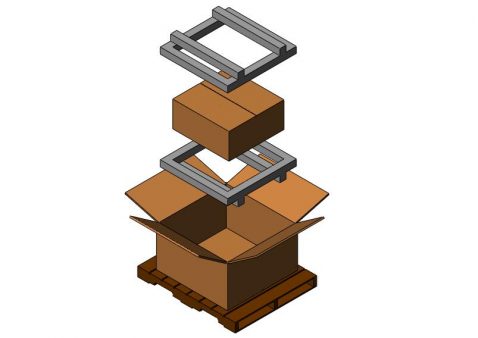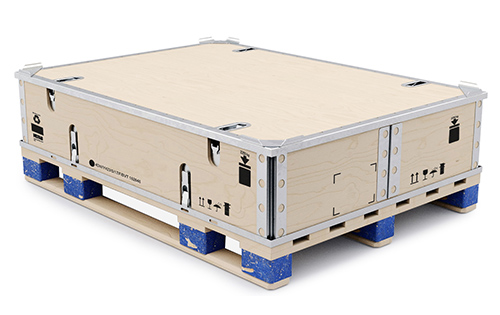Efficient Industrial Recycling Solutions for Sustainable Product Packaging: A Comprehensive Guide
In today's increasingly environmentally-conscious world, the need for lasting product packaging solutions has actually never been greater. To meet this need, companies throughout sectors are proactively looking for effective commercial recycling options. Navigating the facility landscape of sustainable product packaging can be testing without a thorough overview. That's where this comprehensive overview on effective industrial recycling solutions for lasting product packaging is available in. By checking out key locations such as packaging product selection, making for recyclability, applying recycling facilities, teaming up with reusing partners, and tracking and measuring reusing success, this guide will equip you with the understanding and tools essential to make educated decisions and drive favorable adjustment within your organization. Whether you're a product packaging specialist, sustainability manager, or simply interested in the topic, this overview will certainly offer important understandings and methods to help you browse the globe of lasting packaging.
Product Packaging Product Option
The choice of packaging materials plays a vital role in making certain the sustainability of industrial reusing remedies. When it pertains to sustainable product packaging, the selection of products is type in reducing environmental effect and making the most of reusing performance. Choosing the appropriate products can help in reducing waste generation, save resources, and promote a round economic situation.
Materials like cardboard, paper, glass, and particular types of plastics can be reused several times without shedding their high quality. On the other hand, products that are difficult to reuse, such as mixed plastics or non-recyclable compounds, can create difficulties for the recycling procedure and may finish up in landfills or burners.
Another factor to consider is the use of eco-friendly and eco-friendly materials. Packaging made from eco-friendly resources, such as plant-based plastics or biopolymers, can aid decrease dependence on nonrenewable fuel sources and reduce environment change. Furthermore, eco-friendly materials damage down normally over time, lowering the accumulation of waste in land fills.
Moreover, the weight and volume of packaging products should be reduced to lower transport expenses and energy intake. Lightweight products not only need less resources during production however additionally add to lower carbon discharges throughout transport.
Creating for Recyclability
Product packaging designers ought to focus on the use of products that are extensively approved for recycling and have developed reusing facilities. Materials such as glass, light weight aluminum, and particular types of plastic, like Animal and HDPE, are typically recycled and need to be liked over products that are costly or hard to recycle.
One more important factor to consider in making for recyclability is the removal of unnecessary parts or products. By minimizing the number of layers, layers, and extra components, product packaging can be made easier and simpler to reuse. Additionally, developers must intend to lower using combined products, as they can complicate the reusing process.

Implementing Recycling Facilities
Reliable application of reusing infrastructure is critical for the success of industrial reusing services. Without appropriate infrastructure in position, the recycling process becomes inefficient and ineffective, hindering the total goal of sustainable product packaging.
To implement recycling framework efficiently, a number of vital factors require to be taken into consideration. Firstly, there must be an efficient collection system that facilitates the separation and collection of recyclable materials. This can include assigned reusing containers in public rooms, in addition to partnerships with waste monitoring business for curbside pick-up and sorting.
As soon as gathered, the recyclable materials need to be carried to recycling facilities in a prompt fashion. This needs efficient logistics and transportation networks, making certain that the products get to the proper facilities right away.
At the recycling facilities, advanced sorting and processing technologies ought to be in place to separate different types of materials efficiently. This includes making use of automated sorting devices, optical scanners, and hands-on sorting techniques.
Additionally, there ought to be a robust market demand for recycled products. This can be attained through cooperations with producers and sectors that make use of recycled products in their manufacturing procedures. Developing a stable market for recycled materials incentivizes the reusing sector and promotes the circular economic climate.
Collaborating With Recycling Partners

One trick element of working together with recycling companions is the establishment of clear communication networks. It is crucial to establish open lines of interaction to promote the exchange of information, this hyperlink updates, and responses. This enables both parties to remain notified about the progression of recycling campaigns and attend to any obstacles or issues that might develop.
Additionally, cooperation can include collaborations in implementing and making reusing programs. Reusing companions can provide valuable insights and advice in establishing effective collection systems and establishing one of the most proper recycling innovations. By working together, organizations and reusing partners can enhance the recycling procedure and lessen waste.
Furthermore, partnership can extend past the functional facets of reusing. It can likewise include campaigning for and education and learning campaigns. By joining pressures, businesses and recycling partners can elevate awareness about the value of reusing and advertise the fostering of sustainable product packaging practices among customers and various other stakeholders.
Monitoring and Measuring Recycling Success
To guarantee the efficiency of commercial reusing solutions and the accomplishment of sustainable bulk container recycling product packaging objectives, it is vital for organizations and their recycling partners to establish an extensive system for monitoring and determining reusing success (processing company). Tracking and determining recycling success enables services to examine the effect of their reusing efforts, determine areas for enhancement, and set meaningful targets for future progress
One way to track reusing success is via using information collection and evaluation tools. By gathering data on the quantity of product packaging waste created, the percent of waste that is recycled, and the kinds of materials being reused, organizations can obtain beneficial understandings into their recycling performance. This information can after that be evaluated to identify trends, patterns, and locations of inadequacy.
One more essential aspect of monitoring and determining recycling success is developing standardized and clear metrics. This allows organizations to compare their efficiency versus industry standards and track their development in time. Metrics such as recycling prices, waste diversion rates, and greenhouse gas exhausts can supply a quantitative action of an organization's recycling success.

Verdict
Finally, carrying out effective commercial recycling options for sustainable product packaging needs mindful factor to consider of packaging product selection, making for recyclability, carrying out recycling framework, working together with reusing partners, and monitoring and measuring reusing success. By integrating these techniques, organizations can add to a much more sustainable and environmentally-friendly method to product packaging, minimizing waste and promoting the circular economy.
By discovering key locations such as packaging material option, developing for recyclability, applying investigate this site recycling facilities, collaborating with recycling companions, and monitoring and measuring reusing success, this overview will furnish you with the expertise and tools needed to make enlightened decisions and drive positive adjustment within your organization. Packaging developers need to prioritize the use of products that are extensively accepted for recycling and have developed reusing infrastructures.Partnership with reusing partners is crucial for the successful application of commercial recycling options and the success of sustainable packaging objectives. By signing up with forces, organizations and recycling partners can increase recognition about the significance of reusing and advertise the fostering of lasting product packaging practices among consumers and other stakeholders.
By collecting data on the amount of packaging waste generated, the percentage of waste that is recycled, and the types of materials being recycled, businesses can gain important insights into their reusing efficiency.